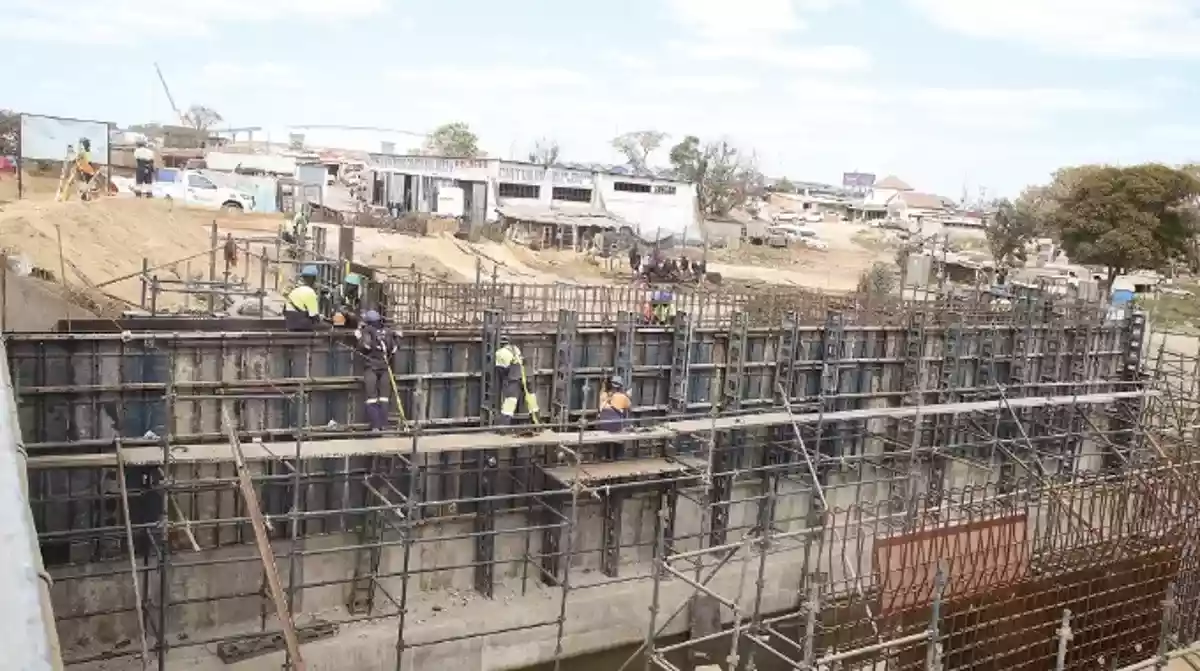
MULTIPLE stretches of vital roads constituting a combined 4,5km will be shut down this Sunday, to allow for the construction of the US$88 million Mbudzi Interchange in Harare, officials said yesterday.
Sections of three roads criss-crossing the busy traffic circle would be closed for 18 months, according to a statement from the Transport and Infrastructural Development ministry.
The shutdowns, which were originally planned for July 31, will shift traffic on the Harare-Masvingo Highway to feeder roads that reconnect the busy artery 1,5km west of the interchange.
High Glen Road, which heads northwards from Mbudzi, will also be closed for 1,5km from the traffic circle, while traffic due southwards on the Chitungwiza Road will be redirected to strategically reconstructed detours.
“Following the gazetting of General Notice 1173 of 2020, it is hereby notified that the Minister of Transport and Infrastructural Development in terms of section 30 of the Roads Act, shall close portions of the (roads) described hereunder and as shown on the layout plan ... for the purposes of construction of Mbudzi Interchange with effect from September 18, 2022,” the ministry said.
“The portions of the roads ... shall be closed for a period of one-and-a-half years and the motoring public shall be using diversion routes, Malvin Road, Forbes Road and Stoneridge Road. The closure of portions of these roads is with effect from September 18, 2022 for a period of one-and-a-half years,” the statement noted.
The Mbudzi Interchange is the highlight of government’s infrastructure revamp under the National Roads Rehabilitation Programme, which has seen several roads facelifted.
However, the programme’s funding model has been blamed for stoking inflationary flames.
- Roads closed for Mbudzi Intercharge
- Roads rehab to reduce carnage by 50%: Mhona
- Transport ministry can do better on Mbudzi Interchange
- Corruption watch: Mbudzi interchange fast turning into a nightmare
Keep Reading
The debt management office said government last year clinched a deal with Fossil Mines, one of the firms constructing the interchange, to fund the project.
“In addition to TBs [Treasury Bills] issuance for budget financing, government concluded a domestic loan with Fossil Mines amounting to US$88 million for the construction of the Harare-Masvingo Road Interchange (Mbudzi). The loan includes a US$26 million down payment by government to unlock the facility,” the debt office said.
Fossil has combined efforts with Zimbabwe Stock Exchange-listed Masimba Holdings Limited and Tensor, under a special vehicle called Tefoma, for the project, which is part of a broader reconstruction of Harare-Beitbridge Highway.
At the end of July, at least 340km of the 585km highway had been reconstructed and opened to motorists.
It sits at the heart of the North-South Corridor, linking the region to the rest of Africa.
“About 340 kilometres have so far been opened to the public,” Mhona told reporters in July.
“We have been all over the country refurbishing our roads. Fifty-five contractors have been engaged and over 10 700 contract workers have been hired. We are proceeding to Chirundu. What you have seen here (at Beitbridge Border Post) will be replicated at Chirundu. We are also moving to feeder roads and dilapidated roads in locations,” Mhona added.
The 340km represented about 58,6% of the 585km highway, which conveys consignments from South African and other ports to the rest of the continent.
Over 100 international freighters also ferry Sadc’s minerals and industrial output to global destinations through the highway daily.
Constructed back in the 1950s as colonial powers swept through the region to tap into vast natural resource endowments, the Beitbridge-Harare-Chirundu Highway had been extensively rundown during 40 years of the late strongman, Robert Mugabe’s reign.
This had held back development in Zimbabwe and frustrated the entire region’s transportation system.
The potholed narrow road with faded or no carriageway markings had turned into a death trap, while delays at Beitbridge and Chirundu border posts had become the order of the day.










